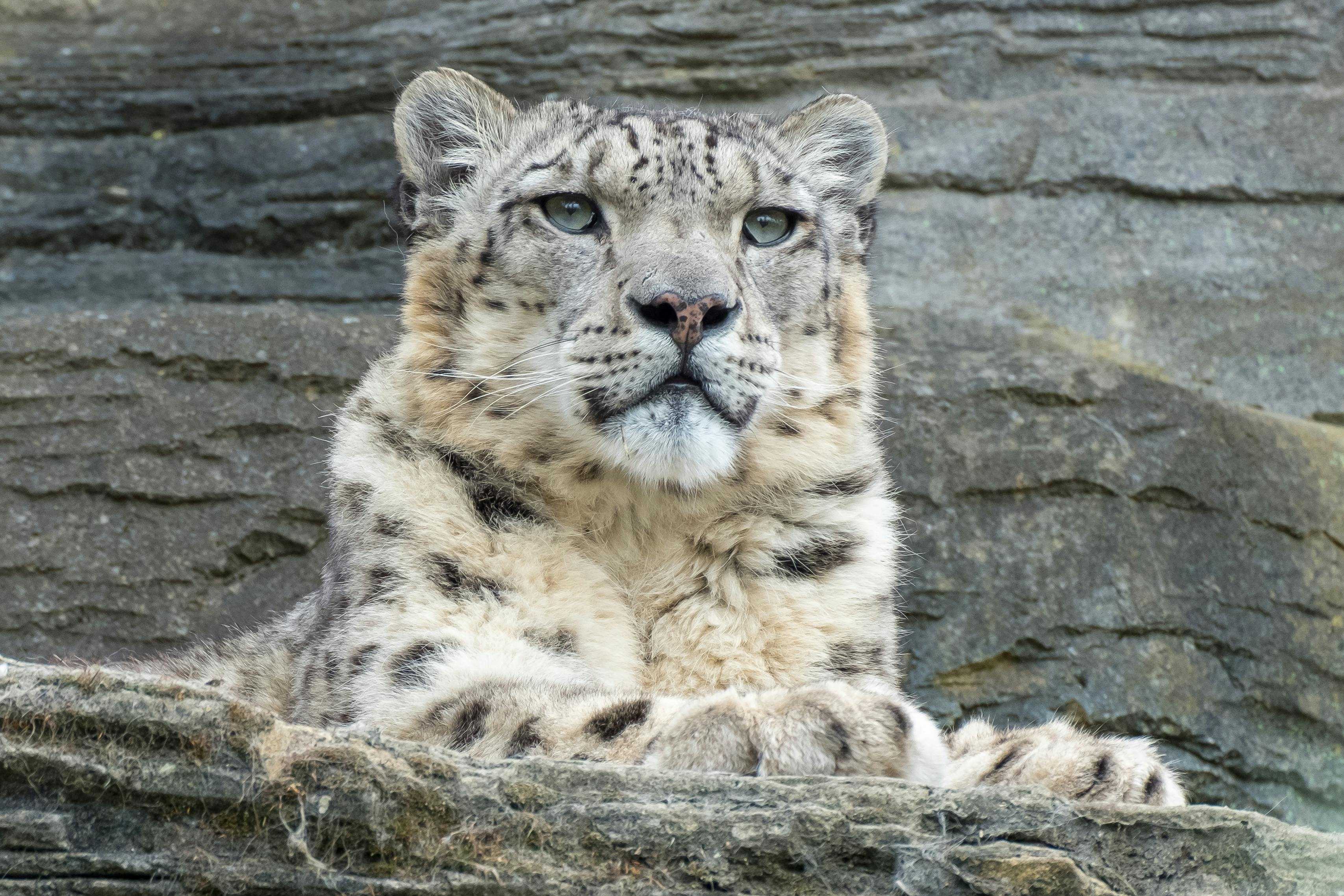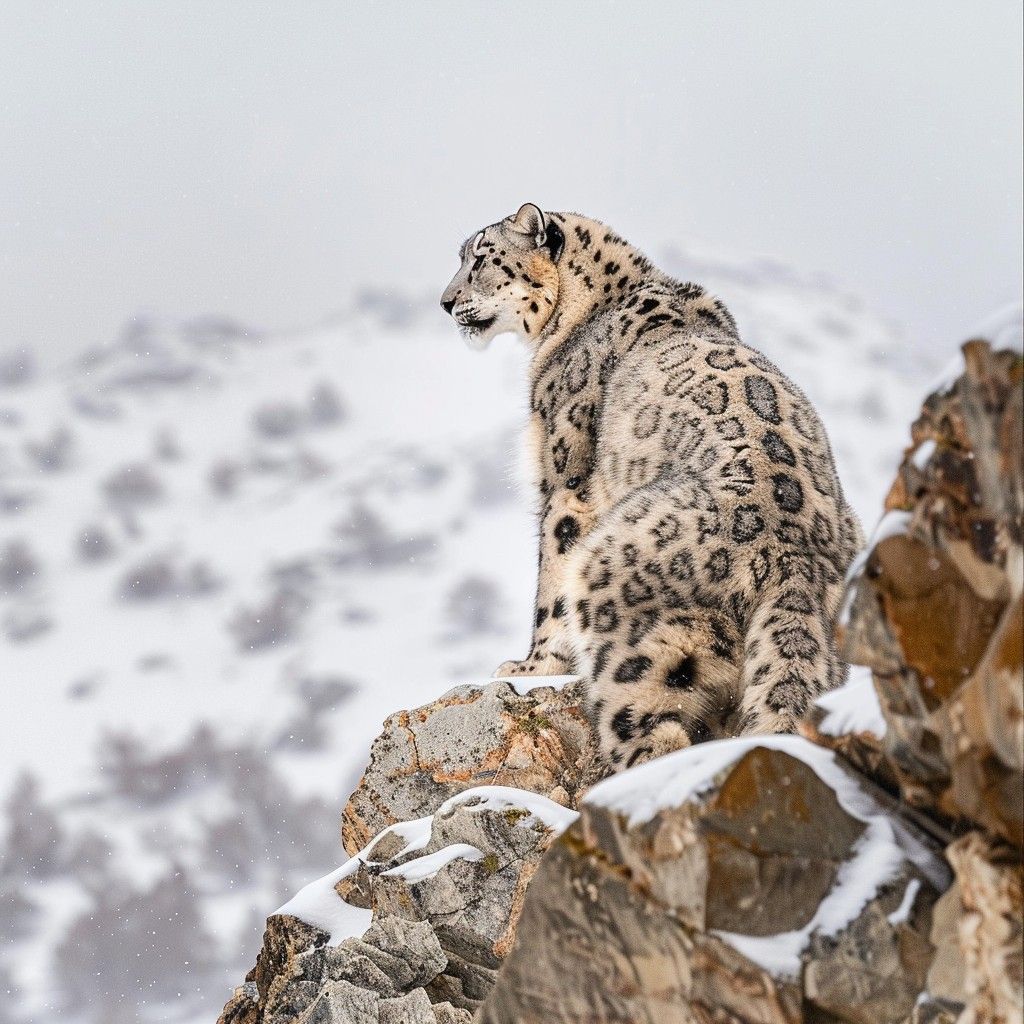
Snow Leopard: Ghost of the Altai Mountains
Snow Leopard: Ghost of the Altai Mountains
The snow leopard, often called the "Ghost of the Mountains," is one of the world's most elusive and awe-inspiring big cats. These magnificent creatures are expertly adapted to life in the harsh, high-altitude environments of Central Asia. In Mongolia, snow leopards roam the rugged and remote Altai Mountains, where they have evolved to blend seamlessly into the rocky landscape. Despite their superb camouflage and stealth, snow leopards face numerous threats, making their conservation a critical priority.
Habitat and Range in Mongolia
Mongolia’s Altai Mountains provide a crucial habitat for snow leopards, characterized by steep cliffs, rocky outcrops, and alpine meadows. The country is estimated to host nearly 1,000 snow leopards, making it one of the most significant habitats for this species worldwide. These big cats are perfectly adapted to the cold, arid climates and rough terrain of Mongolia, where they thrive on a diet primarily composed of ibex, argali sheep, and other mountain ungulates.
The Altai Mountains offer an ideal setting for snow leopards, providing ample prey and isolated environments that help them evade human encounters. However, human encroachment through mining, infrastructure development, and increased livestock grazing poses a significant threat to their habitats. As these industries expand, the delicate ecosystems that support snow leopards and other native wildlife are increasingly under pressure.
Conservation Efforts and Challenges
Conservation efforts in Mongolia are focused on protecting snow leopard habitats, monitoring populations, and mitigating human-wildlife conflict. Organizations like the World Wildlife Fund (WWF) have undertaken large-scale assessments of snow leopard populations, employing advanced techniques such as camera trapping and genetic sampling to estimate numbers and monitor their distribution.
Community-based conservation initiatives are also crucial in Mongolia, where herding is a way of life. Programs that engage local herders are vital for promoting coexistence with snow leopards. Efforts such as livestock insurance schemes and the construction of predator-proof corrals help reduce the financial impact on herders who lose animals to snow leopards, thereby reducing retaliatory killings.
Despite these efforts, snow leopards continue to face significant challenges. Poaching remains a major threat, driven by the demand for their beautiful fur and other body parts used in traditional medicine. Additionally, climate change poses long-term risks by altering the delicate balance of their high-altitude ecosystems, potentially reducing prey availability and forcing snow leopards into closer contact with human settlements.

Ecological Importance
Snow leopards play a vital role in maintaining the health of their ecosystems. As apex predators, they regulate the populations of herbivores such as ibex and argali sheep. This predatory role helps maintain a balance that supports diverse plant and animal communities within the mountainous regions they inhabit. The presence of snow leopards is an indicator of a healthy, functioning ecosystem, and their decline would have cascading effects on the biodiversity of the Altai Mountains.
Cultural Significance
Beyond their ecological importance, snow leopards hold significant cultural value in Mongolia. They are revered in local folklore and often symbolize strength, grace, and resilience. Snow leopards feature prominently in Mongolian art and storytelling, embodying the spirit of the rugged landscapes they inhabit. Their elusive nature and ability to survive in one of the world’s harshest environments have earned them a place of respect and awe among the Mongolian people.
The Path Forward
Protecting the snow leopard is not just about saving a single species; it is about preserving the entire ecosystem of the Altai Mountains. Conservationists in Mongolia are working to enhance anti-poaching measures, strengthen protected areas, and engage communities in conservation efforts. Education and awareness campaigns are also crucial, helping to foster a sense of stewardship among local populations.
Global collaboration is essential for the survival of the snow leopard. International partnerships, funding, and research are key components of effective conservation strategies. By supporting these initiatives, we can help ensure that the "Ghost of the Mountains" continues to thrive in the wild landscapes of Mongolia and beyond.
The conservation of snow leopards in Mongolia is a testament to the resilience of both the species and the people dedicated to protecting it. Through ongoing efforts and international cooperation, there is hope that this enigmatic cat will continue to roam the rugged Altai Mountains, a living symbol of the untamed beauty and ecological richness of Mongolia.
